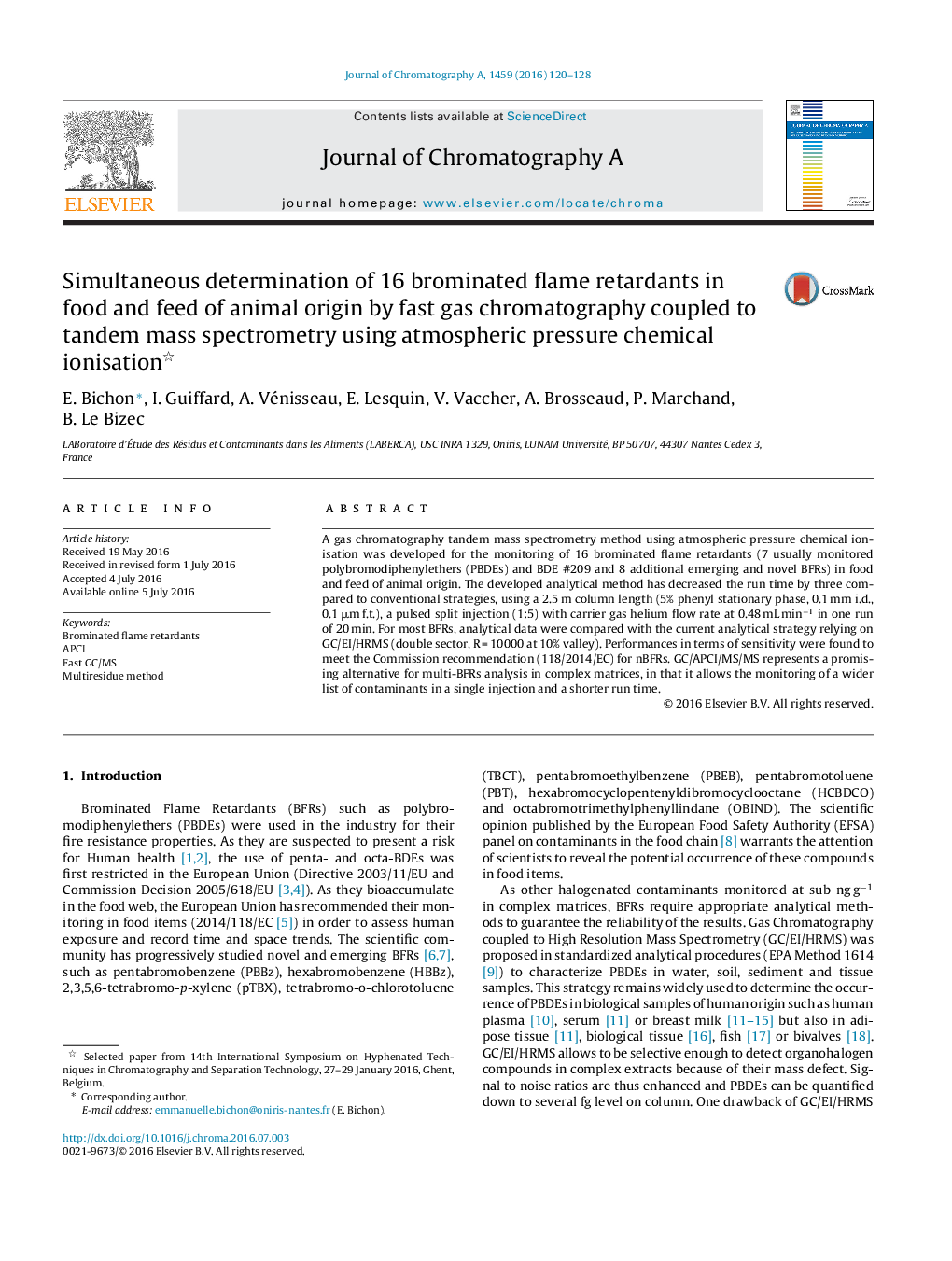| Article ID | Journal | Published Year | Pages | File Type |
|---|---|---|---|---|
| 1200105 | Journal of Chromatography A | 2016 | 9 Pages |
•A new GC/APCI/MS/MS method was developed for fast BFR analysis.•The list of BFRs includes 8 PBDEs such as BDE #209 and 8 novel/emerging BFR.•Short capillary columns were assessed to prevent heavier BFRs’ degradation.•The method was validated for food and feed of animal origin.
A gas chromatography tandem mass spectrometry method using atmospheric pressure chemical ionisation was developed for the monitoring of 16 brominated flame retardants (7 usually monitored polybromodiphenylethers (PBDEs) and BDE #209 and 8 additional emerging and novel BFRs) in food and feed of animal origin. The developed analytical method has decreased the run time by three compared to conventional strategies, using a 2.5 m column length (5% phenyl stationary phase, 0.1 mm i.d., 0.1 μm f.t.), a pulsed split injection (1:5) with carrier gas helium flow rate at 0.48 mL min−1 in one run of 20 min. For most BFRs, analytical data were compared with the current analytical strategy relying on GC/EI/HRMS (double sector, R = 10000 at 10% valley). Performances in terms of sensitivity were found to meet the Commission recommendation (118/2014/EC) for nBFRs. GC/APCI/MS/MS represents a promising alternative for multi-BFRs analysis in complex matrices, in that it allows the monitoring of a wider list of contaminants in a single injection and a shorter run time.
